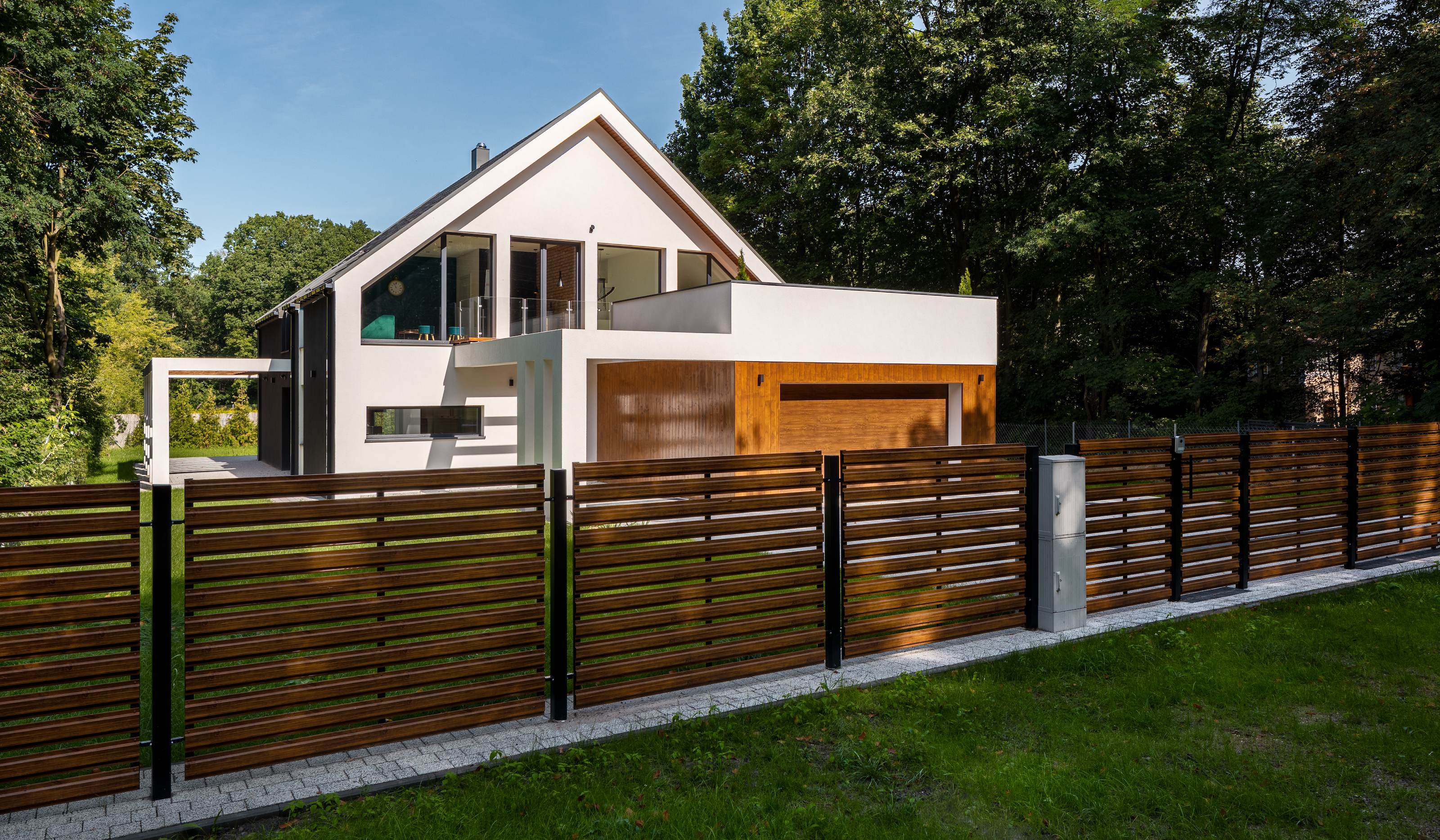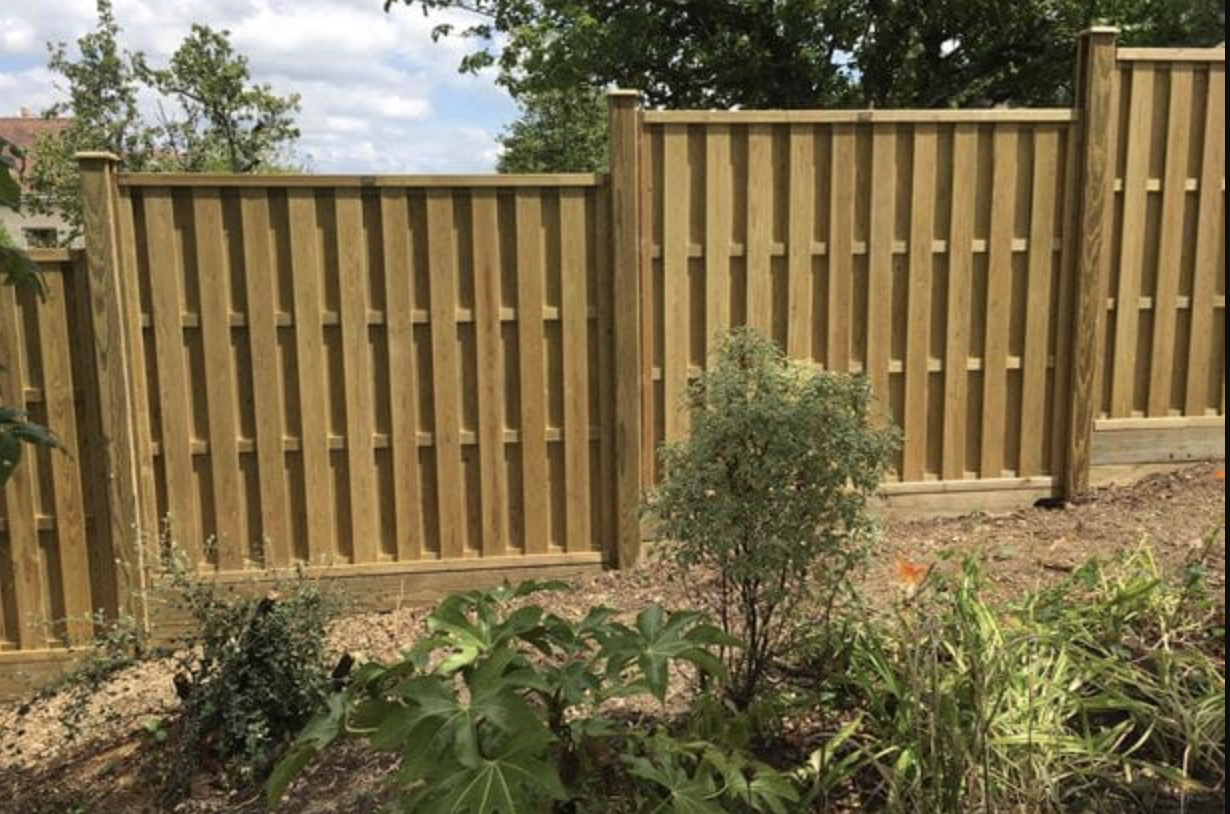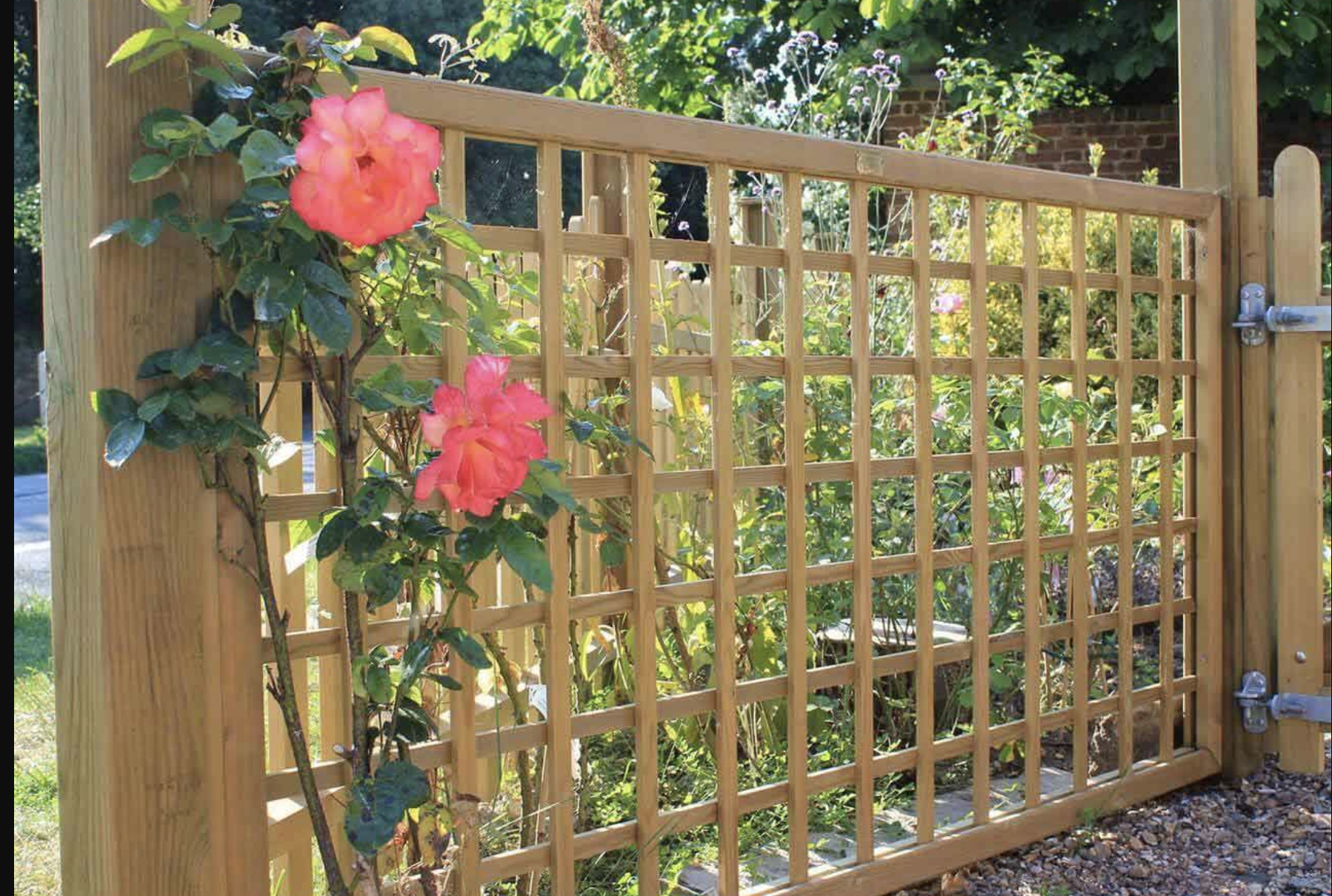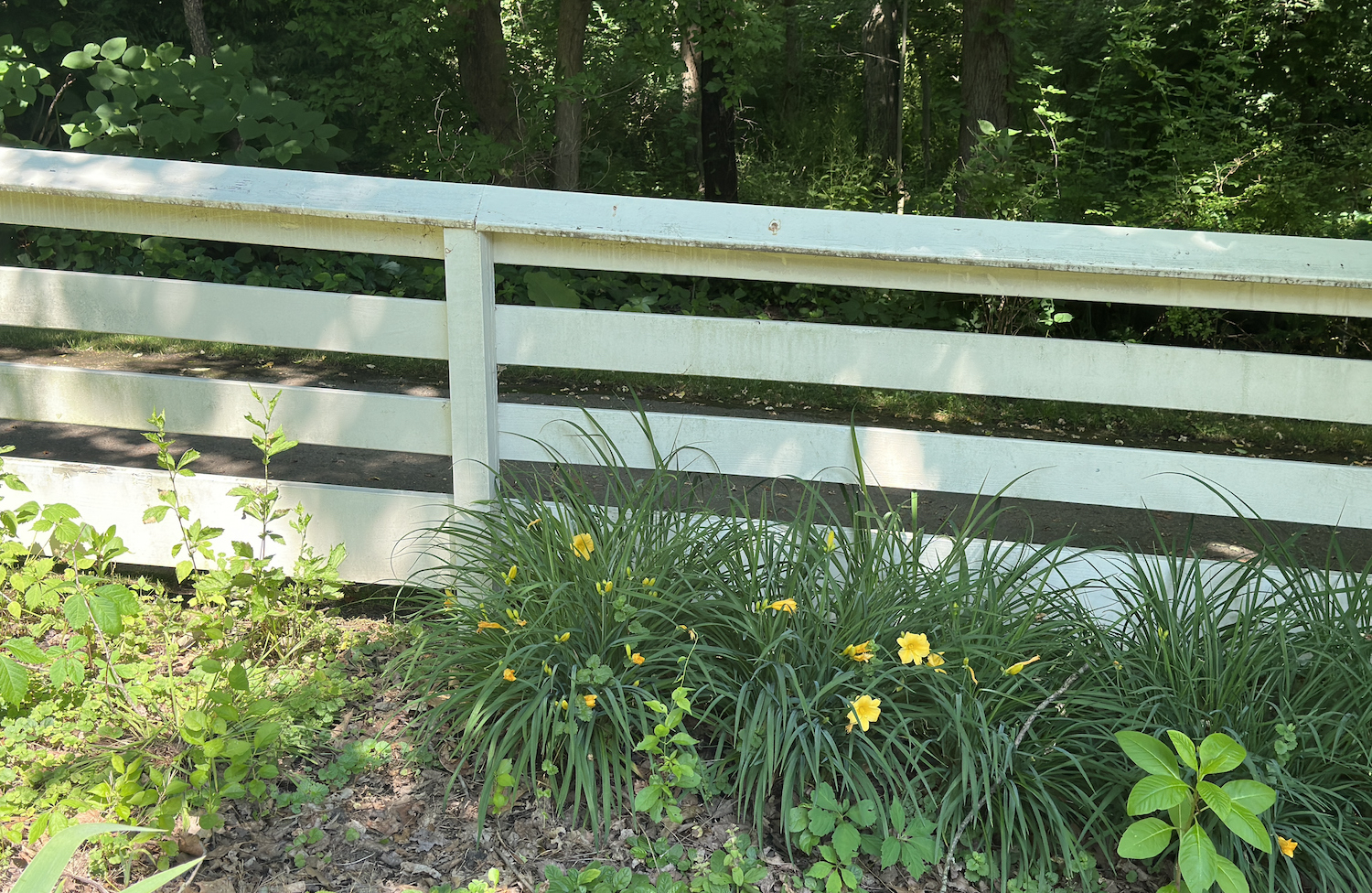
Until you need one, you might not realise how many different types of wood fences there are available. There's a lot of choice. From the style, size and orientation of the slats to the types of timber and decorative details, there are numerous decisions to be made.
Even once you have your head around the main styles of wood fences, retailers tend to offer different features, such as trellis toppers, flat, angled, rounded or scalloped edges, metal frames, capped posts and more. So if you'd rather not spend your precious time endlessly scrolling sites or trailing around big DIY stores looking for your privacy fence, we've narrowed down some of the options and what they offer.
By knowing what you like, what you need and why, you can save time – and maybe some cash – at the point of purchase.
1. Solid privacy fences

These are your standard four to six foot stockade fences, with vertical timber boards. The boards can slot together (tongue and groove) or overlap (called close board or featherboard), so that there are no gaps between the planks. These are best if you want to keep out prying eyes.
It is also possible to opt for privacy fences with horizontal slates, which have a more contemporary look. The tops of these fences are generally flat. However, if security is a concern for you, there are stockade fences with vertical panels angled into a point at the top, making them less appealing to unwelcome visitors. Those in regions prone to harsh weather may prefer 'dog ear' panels (with angled cuts each side) to allow for better air flow.
'Horizontal and vertical cedar privacy fences are the go-to fences in New York because they are better priced than hardwood but still a great, long lasting lumber that looks beautiful in all applications,' says Kat Aul Cervoni, landscape designer and founder, Staghorn NYC and The Cultivation by Kat.
If you're asking the question 'how much does a backyard fence cost?' for a style like this, you'll likely find it's one of the more expensive options you can buy.
2. Picket fences

As American as apple pie some might say, the white picket fence is a popular suburban style. It doesn't offer much in the way of privacy, but it will create an attractive perimeter around your property, especially for your front yard landscaping.
'Picket fences are typically between 3’-4’ high and often used in front yards where taller fences aren’t allowed due to codes/ordinances,' says Kat Aul Cervoni. 'These fences have a classic traditional look and can delineate property lines while also keeping dogs safely enclosed.'
A picket fence can also provide a frame for plants. Choose to have pickets with rounded edges, pointed, flat or dog ear, depending on your preference. A row of pickets the same height provides a smart aesthetic, however, it's possible to create scalloped or rounded effects with picket panels at gradated heights too.
They're largely manageable to install, but if you're looking for a way to install this type of fence extra easily, you'll also find "no-dig" styles available, too, which can be used for fencing or to provide privacy screens around certain spaces in your yard.
3. Venetian, Louvre and Semi-privacy fences

Semi-privacy fences have gaps between the timber boards, which are laid out either vertically or horizontally within the panels. These fences offer a clean, contemporary look and are a popular option for modern backyards.
Venetian or Louvre wood fences also have slim gaps between horizontal slats but differ slightly, as the slats are angled, resembling venetian or louvred blinds. These offer more privacy than flat slats with gaps and provide an attractive dappled light effect too.
'Horizontal fences have become one of the fastest growing fence trends in outdoor architecture,' says an expert from Perimtec. 'We recommend selecting a wood species that has some warp resistance, like cedar or redwood. Avoid pressure-treated pine or softer woods, as they are more prone to warping.'
4. Shadowbox fences

Shadowbox fences (sometimes referred to as hit and miss panels) are great if you want to share the cost of garden fencing with your neighbor. Every other vertical board is attached to the opposite side of the horizontal rails, so the fence has a similar look whichever side you're on. There's no 'good' or 'bad' side.
They also offer better breathability than tongue and groove panels, due to the slender gaps created between the slats, so are a good option for those who live in areas prone to windy weather.
5. Lattice or trellis fencing

Popular as a frame for climbing plants, lattice or garden trellis panels are an attractive choice for a fence too. However, they are less sturdy than a solid fence and will only offer privacy once covered in foliage.
'Lattice fences have criss-crossing wooden panels for an ornamental affect and are great for growing vines on,' says Kat. 'They give a nice balance of light, airflow and privacy.'
Diamond lattice panels offer a more traditional look, while square lattice panels have a simpler style. Both can be installed as a fence, or shorter sections can be added to solid or slatted privacy fences as a topper panel and decorative feature.
6. Post and rail fences

A familiar option for ranches and country homes, post and rail fences are good for keeping domesticated animals in, and wild ones out. However offer little in the way or privacy or security.
'This type of fencing is commonly used in rural areas and pasture enclosures but works in suburban areas too — especially to enclose larger yards,' says Kat. 'Post and rail fences are usually between 3’-4’ high and can have two or three horizontal boards spanning between posts.'
What type of wood is best for a fence?
Once you have an idea of the style of fence that you like and the size you need, consider the type of timber. Different woods have pros and cons, from looks and longevity to cost and quality. Where it is sourced from is important too, so ensure timber is traceable from well-managed forests.
'Spruce, fir and pine timber are some of the most common options because of how durable and affordable they are,' says Gary McCoy, a Store Manager at Lowe's. 'These types of woods are often treated with water-repellent stains to help increase the lifespan.
'Cypress and cedar timber naturally contain chemicals that deter insects. They are resistant to rotting, so they typically last longer. However, these types of woods tend to be a more costly option,' Gary adds. 'Redwood fencing has some of the best quality and aesthetic of the timber options. This is one of the most expensive options for fencing, making it a less practical option for larger fences.'
'Cedar wood is my preferred material for fences due to its ease of maintenance, longevity and natural rot and insect resistance,' says Kat. 'This wood type does not have to be sealed or treated. It starts off a mid-to-light pink brown color and fades to silvery gray as most other woods. It’s less expensive than hardwood fencing, but more expensive than pine.'







